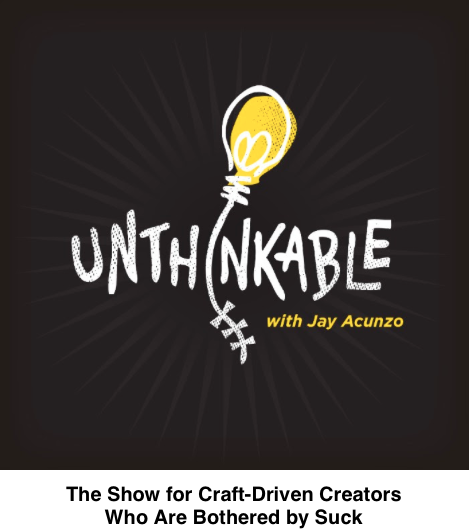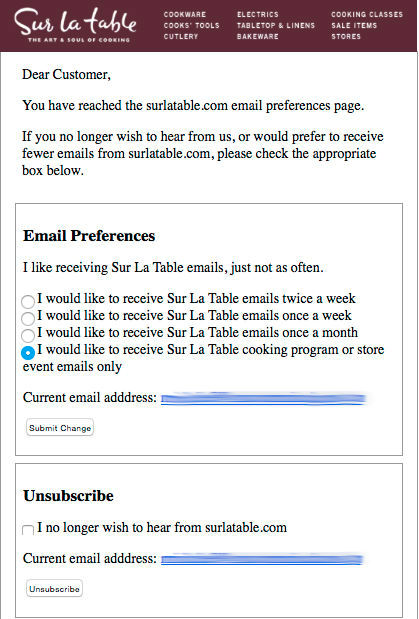
Businesses have a wide variety of content marketing tactics at their disposal; but few are quite as powerful and versatile as email newsletters.
Email distribution is an essential structure that supports and strengthens every piece of content you create, giving your business a means of spreading its insights, initiatives, events, and ideas beyond the confines of owned media channels like your website or blog.
The many benefits are certainly not lost on marketers across the world: According to our annual Benchmarks, Budgets, and Trends reports, e-newsletters are one of the most universally used tactics, with over 80% of marketers including them in their content arsenals this year.
Over 80% of marketers include e-newsletters in their content arsenals this year via @cmicontent #research Click To TweetBut if you are only thinking of email in terms of its value as a delivery vehicle, you may be overlooking just how instrumental this content format can be when it comes to achieving many top organizational goals, such as:
- Building an audience: By providing the kind of valuable, insightful content consumers want to receive on an ongoing basis, your e-newsletters play a major role in helping you convert casual readers into engaged brand fans.
Ultimate Guide: 11 Sign-Up Strategies for Building Your Email List
- Deepening audience engagement: Subscribing to an e-newsletter demonstrates that a reader is interested in more than just a quick, one-time interaction with a single piece of content. It’s the perfect place to introduce the subscriber to other relevant information and offers from your business – company news, event invitations, or large-scale content projects.
- Sales and cross-selling: Not only can you incentivize an initial purchase by delivering targeted discounts and deals in your email content, you can recommend add-on products and services that your subscribers might like based on offers they’ve taken advantage of.
- Retention/loyalty: E-newsletters can be used in conjunction with loyalty cards or other membership-driven programs, helping you strengthen your commitment to your customers’ ongoing satisfaction.
- Brand advocacy: E-newsletters can motivate customers to help you spread the word about your brand by including assets like contests, quizzes, and other user-generated content opportunities that give them a creative outlet for self-expression.
Inspiration for excellent e-newsletters
Just how much can you accomplish with a little email content? Here are a few examples of ways that marketers have leveraged e-newsletters to open up new business opportunities, create exciting and unexpected conversations, and connect with consumers based on the things they are most passionate about.
Example 1: An “Unthinkable” storytelling journey

Frequent Content Marketing World speaker Jay Acunzo, NextView Ventures vice president of platform, has more than a little experience with using e-newsletters to build an audience, having developed a robust community of subscribers around his personal Sorry for Marketing blog and weekly e-newsletter. When he recently decided to embark on a new business venture, he began his efforts by inviting his existing subscriber base to come along for the ride.
As he prepared to launch Unthinkable – a community for passionate devotees of craft-driven content creation – Jay treated Sorry for Marketing subscribers to a view of the inner workings of building his new brand – from business ideation to branding considerations to internal conversations that were part and parcel to his process. By planting the seeds of interest among his existing fans and followers, Jay’s Sorry for Marketing newsletter content created a ready-made audience for the new business – before even he knew what form that business would eventually take.
Lesson: Translate experience into knowledge. By providing your audience with one-of-a-kind conversations, tips based on your own experiences, or a glimpse behind the scenes of an unfamiliar process, your newsletters can position you as a can’t-miss guide to the insights they want – and can’t get anywhere else.
Example 2: An eye-opening exploration on relevant topics

Because articles about bedroom furnishings can be kind of a snore, mattress retailer Casper decided to go beyond the bed with its Van Winkle’s weekly e-newsletter. Devoted to all things sleep-related, the publication operates independently of its e-commerce parent, avoids any overt promotion of Casper’s products, and is managed by a talented team of experienced journalists who take an eye-opening and newsworthy approach to exploring the topic of sleep from every angle.
Lesson: Find your content tilt. Content you’ve published on other channels doesn’t have to comprise your e-newsletters. To help your brand stand out from the competition, consider taking your audience in a new and unexpected direction by exploring topics that are relevant – but not directly connected – to your business.
3 (Easy) Ways to Truly Surprise Your Audience
Example 3: Passion to spare (and share)

If cat videos make the Internet go ’round, dog-related content might just be the secret to driving the kind of rabid (sorry) fandom that’s sure to inspire brand advocacy. Take the subscription service BarkBox. The company’s email newsletter, BarkPost, keeps dog lovers informed on important news stories (such as pet product recalls) and other canine-related curiosities, while providing subscribers with a daily dose of puppy love in the form of dog-related videos and memes. Not only is the content trustworthy and highly shareable, it gives BarkBox customers fodder for indulging in their pet passion, while BarkBox gets treated to the spoils of their attention.
Lesson 3: Give fans a passion project they can really (self) identify with. By connecting with consumers through content that’s bound to inspire a passionate response, BarkBox gets subscribers to voluntarily spread the word about how much they love to treat their furry friends – without having to beg.
Quick tips for more-successful email efforts
As with any critical content system, you are more likely to achieve success with email newsletters if you have a documented content marketing strategy to guide your content creation decisions. But even with a solid strategy, if you fail to keep up with the topics of current interest, are unable to deliver on time, or aren’t giving readers the ability to choose the terms of their engagement, even your most faithful followers may start to overlook your e-newsletters in their crowded inboxes or opt out altogether.
Here are a few considerations to keep an eye on:
- Keep your brand on your reader’s regular schedule: By delivering your e-newsletters on a consistent basis, you create an expectation of value – something readers eagerly anticipate receiving. And if your content is suitably relevant, interesting and valuable, they may even set time aside to engage with each issue when it arrives.
- Make it responsive: Email content that isn’t coded and optimized for mobile viewing across multiple screens and devices is a total brand buzzkill these days. In fact, as many as 42% of mobile users will delete an email that doesn’t display on their devices correctly.
- Enable it to adapt to the user’s context: Ready to go beyond the cosmetic and practical features of responsive design? Consider developing an adaptive content strategy, which will allow you to deliver personalized e-newsletter content to suit the consumer’s particular informational needs.
- Be transparent: Clearly outline exactly what content your readers are going to receive when they sign up – especially if they will be subscribed to multiple mailings when they register.
- Be flexible with your subscription terms: Whenever possible, enable subscribers to customize the content they receive – for example, by offering the option of daily newsletters or a weekly digest, or by offering other newsletters segmented by topics of interest or geographic region. Not only does this serve their interests and preferences, but by asking them to select the content that’s most relevant to them, it’s also a way to gather more data on what those interests actually are.

Need to give your email newsletter a little tune-up so that it fires on all the above cylinders? Follow this 7-Minute Email Marketing Workout.
Click to enlarge
Embed this image on your site (copy code below):
Measuring the impact of your e-newsletter
How do you know if your e-newsletters are working? There are multiple ways you can track and analyze their performance, giving you plenty of data to optimize your email campaigns, as well as inform all your other content creation efforts.
Ultimately, the metrics to measure the impact of your e-newsletters will depend on the goals you are trying to achieve. But there are some analytics that can be used as baseline indicators of relevance or of goal-driven behavior. John Hanson, CMI’s audience development manager, shared a few of the data points he is tracking, as well as a few he is building toward as we continue to refine our processes:
- Open rate – how many subscribers open a newsletter that arrives in their email inboxes
- Overall click-throughs – the total times a newsletter reader clicks on a link to read additional content
- Time span between click-throughs based on initial send time – i.e., how many people save your emails and click through later
- Number of unengaged subscribers – how many subscribers aren’t finding your content to be relevant (an indication that you may not be delivering content your subscribers find valuable or your newsletters aren’t reaching the right audience)
- Activity patterns of those who open or click through on specific topics – this helps you analyze the customer journey of readers based on their areas of interest
- Activity patterns of subscribers who attend online or in-person events – this is one of our top conversion goals
- Correlation between active subscribers and opportunity stages – this can reveal subscribers whose sales leads may be worth nurturing
How to Uncover Critical Content Marketing Insights Using Google Analytics
Conclusion
No matter what your content marketing goals, creative ideas, or topics of focus may be, chances are email newsletters can help you build a connection with your audience and keep the lines of communication open. Got a great example of an e-newsletter you’d like to share? I’d love to hear about it in the comments.
Looking for more ways to maximize the impact of your email content? Get practical insights, advice, and answers in our 2018 Guide to Essential Content Marketing Tactics.
Cover image by Joseph Kalinowski/Content Marketing Institute


